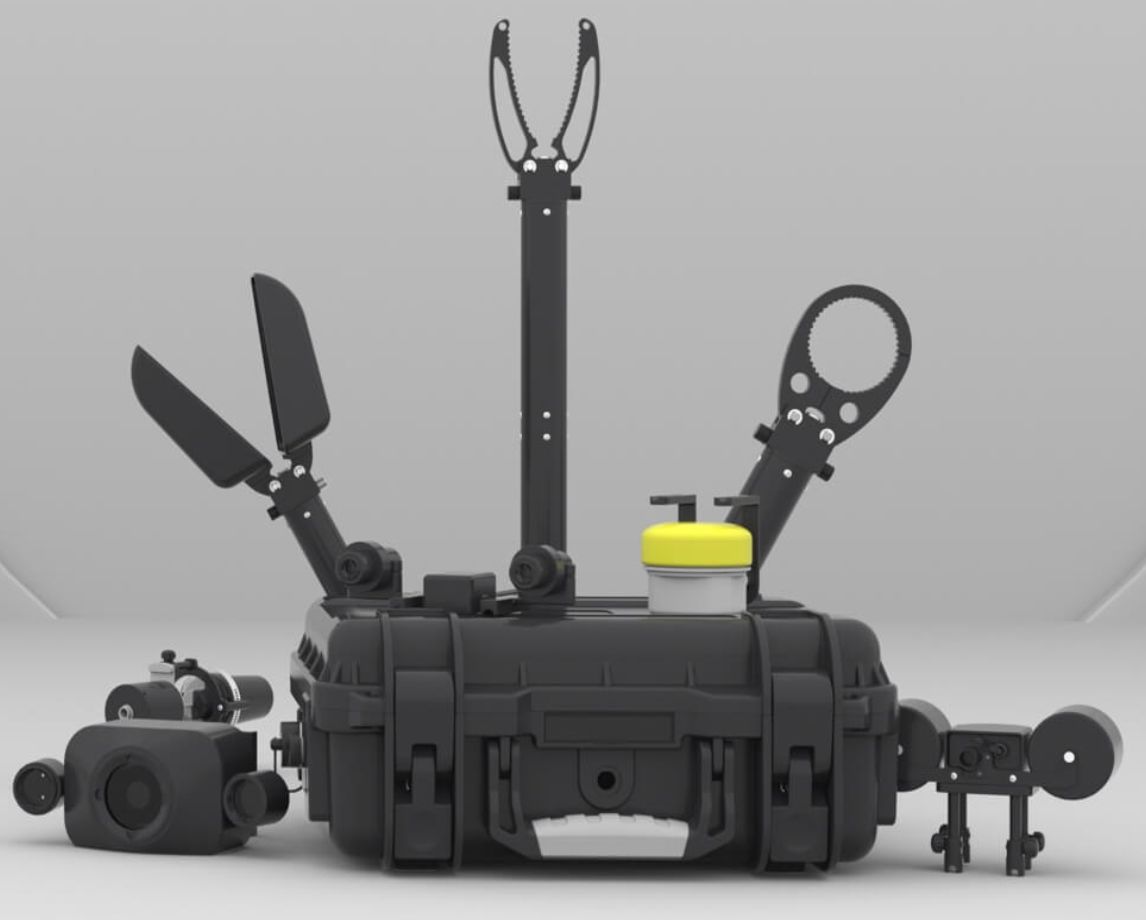When we talk about Remotely Operated Vehicles (ROVs), the true magic often lies not just in the vehicle itself, but in the incredible "payload" it carries. Think of the ROV as a fearless explorer, and its payload as its carefully chosen toolkit, ready for any underwater challenge. This "toolkit" is what transforms a highly manoeuvrable underwater robot into a specialised instrument, capable of executing a vast array of missions in the most demanding environments on Earth.
The diversity of ROV payloads is truly astounding, each component carefully selected to meet the unique demands of a specific subsea task. Here's a glimpse into the essential gear that makes ROVs crucial:
Cameras & Lighting In the dark, murky depths, visibility is paramount. High-definition cameras, capturing both still images and video, are the ROV's primary eyes, allowing for detailed inspection, survey, and observation. These are invariably paired with powerful lights – often LED arrays – to cut through the gloom and reveal the intricate details of the underwater world. Without clear vision, complex operations would be impossible.
Manipulator Arms My personal favourite, and undoubtedly one of the most versatile tools, is the manipulator arm – affectionately known as "the claw." These robotic arms are the ROV's hands, equipped with various grippers and specialised tools. Whether it's turning a valve on a subsea pipeline, retrieving a lost object from the seafloor, deploying sensors in precise locations, or even performing intricate cutting operations, the precision and utility of a well-designed manipulator arm are unparalleled. It brings a level of human-like dexterity to an otherwise inhospitable environment.
Sonars & Acoustic Systems When visual cues are limited by darkness or turbidity, sonars and acoustic systems become the ROV's ears and mapping tools. Multibeam sonars create detailed 3D maps of the seafloor, while side-scan sonars provide high-resolution images of objects on the seabed. USBL (Ultra Short Baseline) systems are crucial for precise underwater navigation and positioning, ensuring the ROV knows precisely where it is and where it needs to go.
Sensors The ocean is a dynamic environment, and understanding its properties is critical for many missions. ROVs are equipped with a wide array of sensors to measure parameters like temperature, depth, salinity, oxygen levels, and turbidity. This data is vital for environmental monitoring, scientific research, and assessing operational conditions for various industries.
Sampling Equipment For scientific exploration and environmental assessment, ROVs can carry specialised equipment to collect samples of water, sediment, or even biological specimens. This allows researchers to analyse the chemical composition of water, study benthic organisms, or investigate geological formations without the need for human divers in hazardous conditions.
Survey Tools Beyond basic mapping, ROVs can deploy advanced survey tools. Magnetometers detect ferrous objects on or beneath the seafloor, invaluable for locating pipelines, unexploded ordnance, or sunken artefacts. Pipeline trackers follow buried lines, while sub-bottom profilers use acoustic pulses to reveal layers beneath the seabed, crucial for geological surveys and understanding sediment composition.
Intervention Tools In the realm of subsea infrastructure, ROVs are invaluable for intervention tasks. This includes equipment for connecting to subsea structures, performing repairs on pipelines or wellheads, or assisting with the precise installation of new components. Their ability to work at great depths and in harsh conditions makes them essential for maintaining critical underwater assets.
In essence, the ROV is an agile and robust platform, but it's the carefully selected payload that empowers it to perform specialised, often high-stakes, work in challenging underwater environments. The right payload isn't just an add-on; it's the critical determinant for a successful mission, whether that mission involves inspecting an offshore oil rig, laying vital communication cables, or exploring the deepest, most mysterious parts of our oceans.
What's your preferred ROV payload or accessory? Mine's still "the claw" – for its sheer utility and precision in so many diverse tasks! Share your favourite in the comments below! 👇
Want to learn more about how AlphaGeo utilises cutting-edge ROV technology and the perfect payload combinations for your next subsea project? Contact us today!


Share:
Revolutionising Hull Inspections with CHASING ROVs
Revolutionising Heavy-Lift Logistics: Introducing FlyingBasket Drones